The anatomy of a Bywater Surfboard

Ribs, rails, skins, blocks, vents - what's all this and how does it make a surfboard? The Bywater Surf hollow wooden surfboards are a clever masterpiece and a testament to the saying 'the whole is greater than the sum of all parts.'
We’ve been making these wooden surfboards for many years now and have had over 200 people join us in the workshop for our 4 day board making course. So it’s safe to say we’ve perfected the art of crafting timber into beautiful and functional rides.
For the first time wooden surfboard maker, it can be confusing to know how all these parts come together to make a legitimate surfboard. Here we introduce the ‘anatomy of a Bywater Surfboard’ …

Creating the internal frame of the board is where it all begins. We have 11 different board styles, each with their own rails and ribs. The rails are made from paulownia timber and the ribs are created from CNC cut plywood. The size, shape and length of these parts are very specific to the board that is being crafted. For example, the Fanny requires 10 ribs while the Rose taking a total of 16 ribs. The ribs need to be evenly spaced to ensure the integrity and durability of the structure and board outline shape. The ribs are numbered in order from tail to nose, to correspond with the markings on the internal of the rails.
The frame consists of; 3 paulownia strips per side (that are glued together to form each side), the ribs (with holes to allow for air flow) and nose and tail blocks (also paulownia). When assembling the frame, we add in some small wooden stoppers to the rails to assist with the nose/tail block being installed. The inside of the surfboard also includes extra timber for where the leash plug, screw vent and fin boxes are later installed into.
The key to a hollow wooden surfboard is a small brass screw bung that is positioned on the underside of the board towards the tail. Read more about this integral part here.
The frame is assembled with a combination of tape, nail gun, hot glue and epoxy resin.. and an extra pair of helping hands is ideal. As the frame is the foundation of the structure and integrity of the board, we fix a strip of ply down the centreline, to reduce flex when the glue goes off.
Once the frame is tidied up and shaped to perfection, the next stages of wooden surfboard making take place; prepping the paulownia deck skins, internally fiberglass them, adhering the skins to the frame with glue and a vacuum bag process, then final shaping and sanding. Before resin coating the board, fin boxes are installed as well as an (optional) Goretex brass vent, leash plug and screw bung. We cram a lot in over our 4 day course - these time lapse videos give a great glimpse into how it all pans out.
Whether you’re making a board with us in the workshop or embarking on a do-it-yourself adventure, we aim to guide you through the process as seamlessly as possible. It’s an extremely rewarding project and there’s no better joy than riding a surfboard you’ve built yourself.



